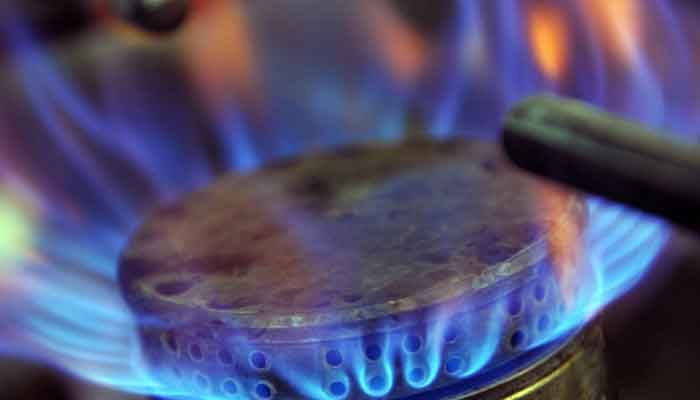Gas transmission system continues to face danger of collapse
OGDCL, Mari, MOL and PPL have been forced to reduce gas outflows to decrease pressure in main pipeline
ISLAMABAD: Despite considerable reduction in gas outflows by Exploration and Production (E&P) companies, the country’s gas transmission system continues to be on the verge of collapse.
Official sources in the Energy Ministry told The News on Tuesday the line pack still stays at 5.078 billion cubic feet (bcf). “If it crosses 5bcf, gas system of the country can any time burst, putting the whole country in deep gas availability crisis,” officials said. The gas volume should not be more than 4.670 bcf in gas transmission pipeline system.
The OGDCL, Mari, MOL and PPL have been forced to reduce gas outflows to decrease pressure in the main pipeline, as their gas fields, which are nearing depletion, could be exposed to vulnerability because of reduction in gas outflows. Most of the time such gas fields could not attain natural gas pressure, and some gas fields could not be recharged despite heavy investments in the past.
The public sector E&P companies have conveyed their dismay to the government functionaries over their direction to them for reducing gas outflows repeatedly.
This is the second time in the current month line pack pressure has put the gas transmission system of country under duress. Line pack pressure stayed on May 4-5. It continues to last for four days starting from May 25. But the authorities have only one recipe to handle the situation and that is reduction of gas flows from local gas fields.
As of May 28, gas volume in the pipeline still stays at 5.078bcf, mainly because of massive reduction in RLNG consumption by power sector to 525mmcfd against its demand of 750mmcfd as fuel for electricity production.
“If the power sector consumes RLNG as per its demand, the ongoing massive electricity loadshedding can be significantly reduced,” the Power Division sources said.
The Power Division, however, is shy to run four RLNG power plants in Punjab on full scale, sources said. They argue under this scenario, the end consumers will receive inflated bills in the form of monthly fuel adjustments.
“The electricity generation, based on RLNG as fuel, is very costly. The circular debt, which stands at Rs2.6 trillion up to March 2024, will further increase,” sources said. Powers sector pundits say more electricity generation will result in more increase in circular debt. It is all because of low recovery of electricity bills and increasing theft mainly because of high electricity prices, sources said.
“On top of that, the industrial sector has also reduced consumption of RLNG again because of high tariff of gas. Hundreds of industrial units in Punjab have closed down.” The CNG sector in Punjab has almost disappeared because of government policy not to provide RLNG to CNG sector even at prices higher than RLNG tariffs.
Country cannot reduce import of RLNG because the sovereign guarantees are involved in long-term agreements with Qatar and ENI, sources said. Slashing local gas off-takes in the system is the only option left with the Petroleum Division, sources added.
The data on line pack shows consumption of gas in fertilizer sector stands at 70mmcfd on Tuesday as compared to Monday, which was at 63 mmcfd.
-
 How Princes William, Harry Were Caught In Early Royal Controversy Involving Charles
How Princes William, Harry Were Caught In Early Royal Controversy Involving Charles -
 Prince Harry’s Absence Leaves Gap For Royal Family Among Young People
Prince Harry’s Absence Leaves Gap For Royal Family Among Young People -
 Karley Scott Collins Breaks Silence On Keith Urban Dating Rumours
Karley Scott Collins Breaks Silence On Keith Urban Dating Rumours -
 Timothee Chalamet Is Still A 'normal Guy,' Says Kevin O'Leary
Timothee Chalamet Is Still A 'normal Guy,' Says Kevin O'Leary -
 Henry Winkler Opens Up On His Special Bond With Adam Sandler: 'Filled With Warmth'
Henry Winkler Opens Up On His Special Bond With Adam Sandler: 'Filled With Warmth' -
 Bruce Springsteen Makes Strong Political Statement
Bruce Springsteen Makes Strong Political Statement -
 Prince Harry Relationship With King Charles 'not Straightforward,' Says Expert
Prince Harry Relationship With King Charles 'not Straightforward,' Says Expert -
 Truth Behind Jennifer Lopez's 'rude' Glambot Moment Laid Bare
Truth Behind Jennifer Lopez's 'rude' Glambot Moment Laid Bare -
 Nicole Richie Still Loves This Makeup Trend From Her Teen Years
Nicole Richie Still Loves This Makeup Trend From Her Teen Years -
 Meghan Markle Plans To Hide Behind Kids Over Return To UK
Meghan Markle Plans To Hide Behind Kids Over Return To UK -
 Dolly Parton Marks Major Milestone As State Governor Honors Her Legacy
Dolly Parton Marks Major Milestone As State Governor Honors Her Legacy -
 Karley Scott Collins Reacts To Rumours Of Her Dating Keith Urban
Karley Scott Collins Reacts To Rumours Of Her Dating Keith Urban -
 Meghan Markle Sends Shockwaves With Promise Of Chaos: ‘Has The Power To Upset The Royals’
Meghan Markle Sends Shockwaves With Promise Of Chaos: ‘Has The Power To Upset The Royals’ -
 Jesy Nelson, Zion Foster Call It Quits Amid Twins' Heartbreaking Diagnosis: Source
Jesy Nelson, Zion Foster Call It Quits Amid Twins' Heartbreaking Diagnosis: Source -
 What King Charles Told Princess Diana In Letter Before Wedding?
What King Charles Told Princess Diana In Letter Before Wedding? -
 David Crosby Said This One Singer Had 'no Talent At All'
David Crosby Said This One Singer Had 'no Talent At All'




